What does it take to get a 342-piece marching band to Ireland for St. Patrick’s Day? For starters, 11 flights from six different airports, eight charter buses for the student performers and 20 staff members, nine hotels and 139 instruments and color guard flag bags that needed to be checked baggage at the airports alongside the 203 carried-on instruments and twirling batons.
The University of Florida Fightin’ Gator Marching Band performed at three events across Ireland for St. Patrick’s Day: a parade in Cork, an international band competition in Limerick and a concert in Dublin.
“We have had a standing invitation to go to Ireland for several years, and this is the first year that it has aligned with spring break,” said Jay Watkins, associate director of bands. “I couldn’t be more proud of how they represented our university on the international stage.”
Weekend after weekend, students prepared for the international trip, practicing parade formations, music and the intricacies that each of the three performances called for.
Because of the size of the ensemble, departure was staggered, with groups bussed to Jacksonville, Orlando and Atlanta.
After hours of flights, buses and lugging instruments, batons and uniforms through airport terminals, everyone landed in Dublin to be taken to the Rock of Cashel on their way to Cork.
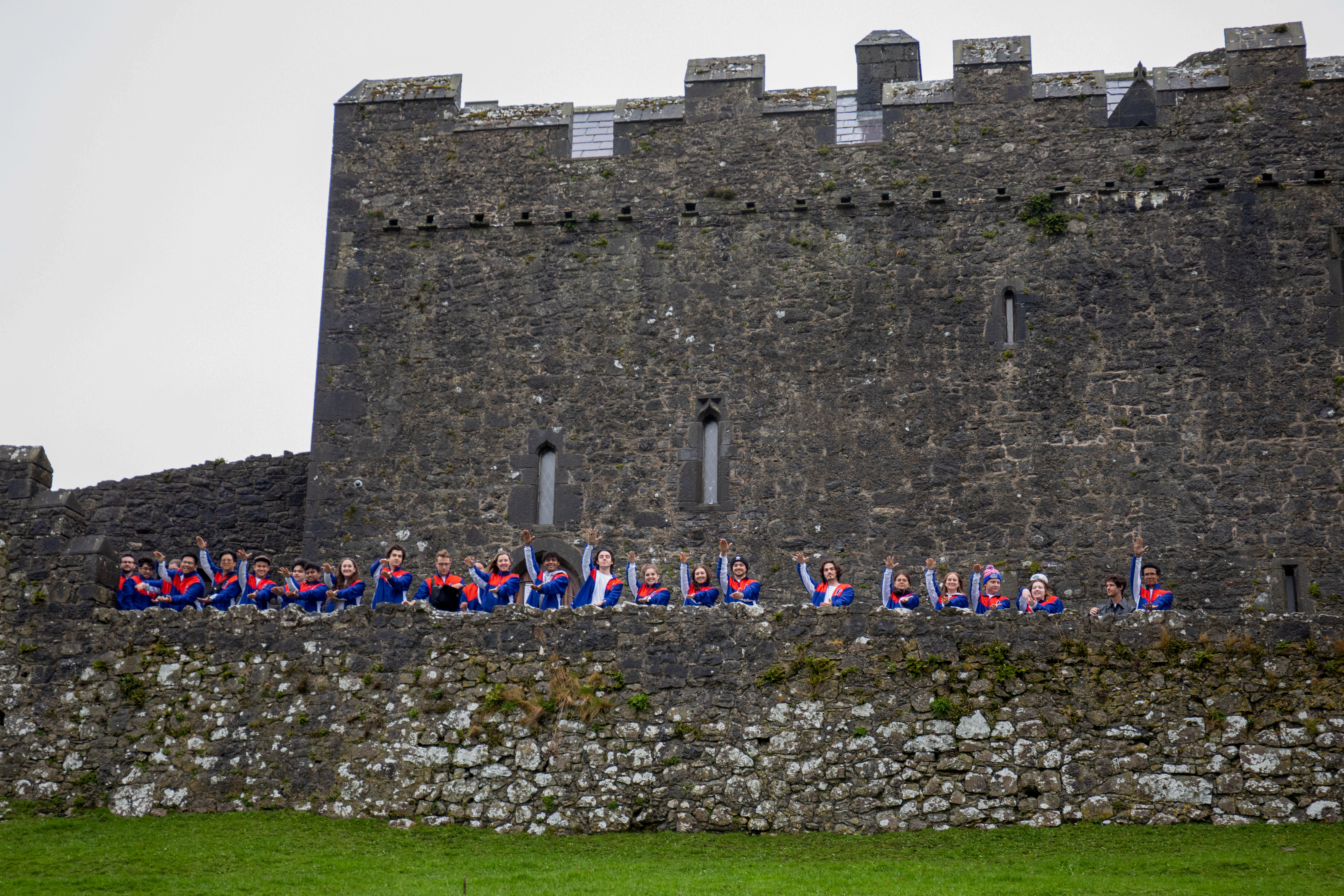
The Rock of Cashel is a large collection of medieval buildings that claims to be the spot where St. Patrick converted the King of Munster to Christianity in the fifth century.
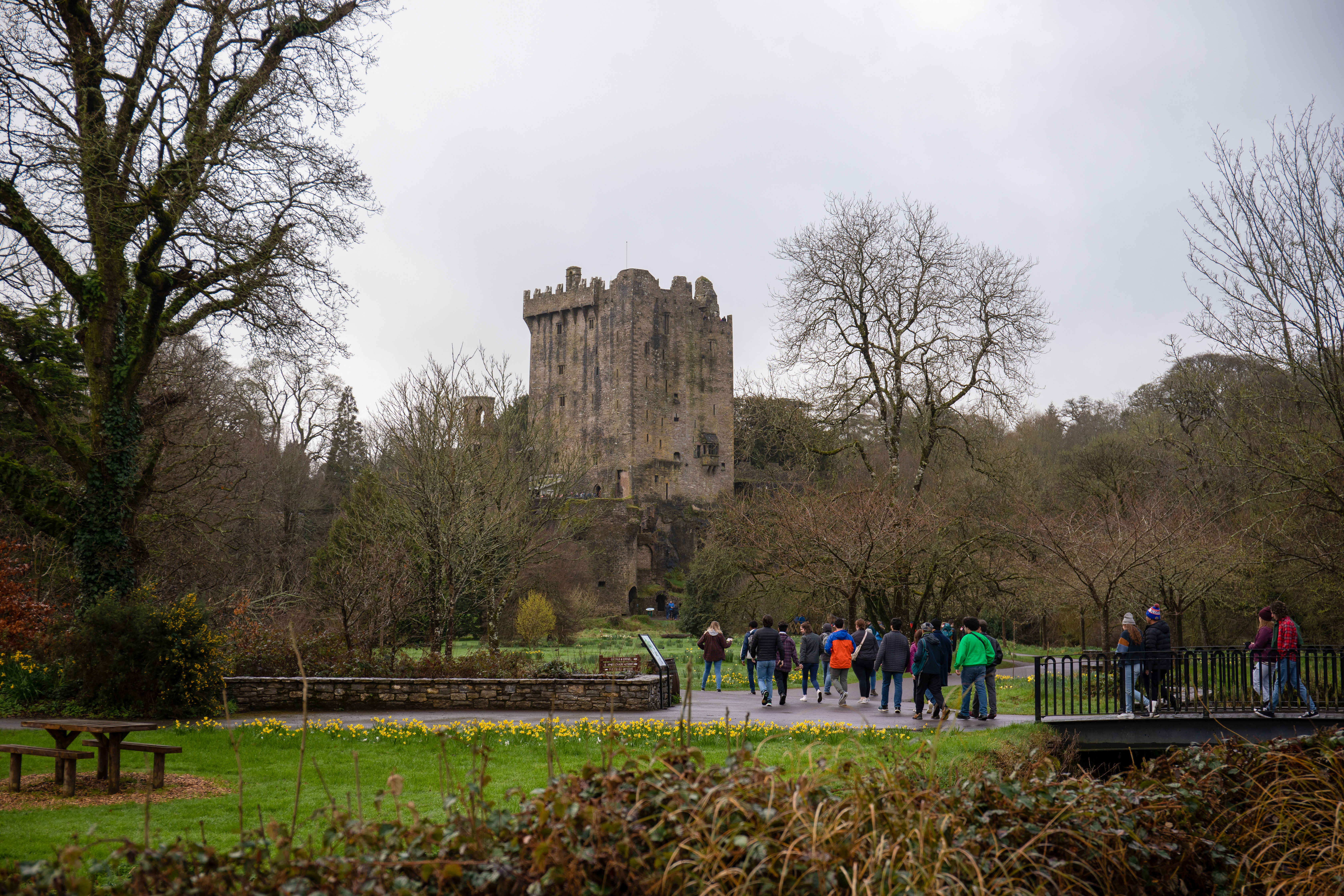
After a jetlagged night in Cork, all eight Irish charter buses took the students to Blarney Castle.
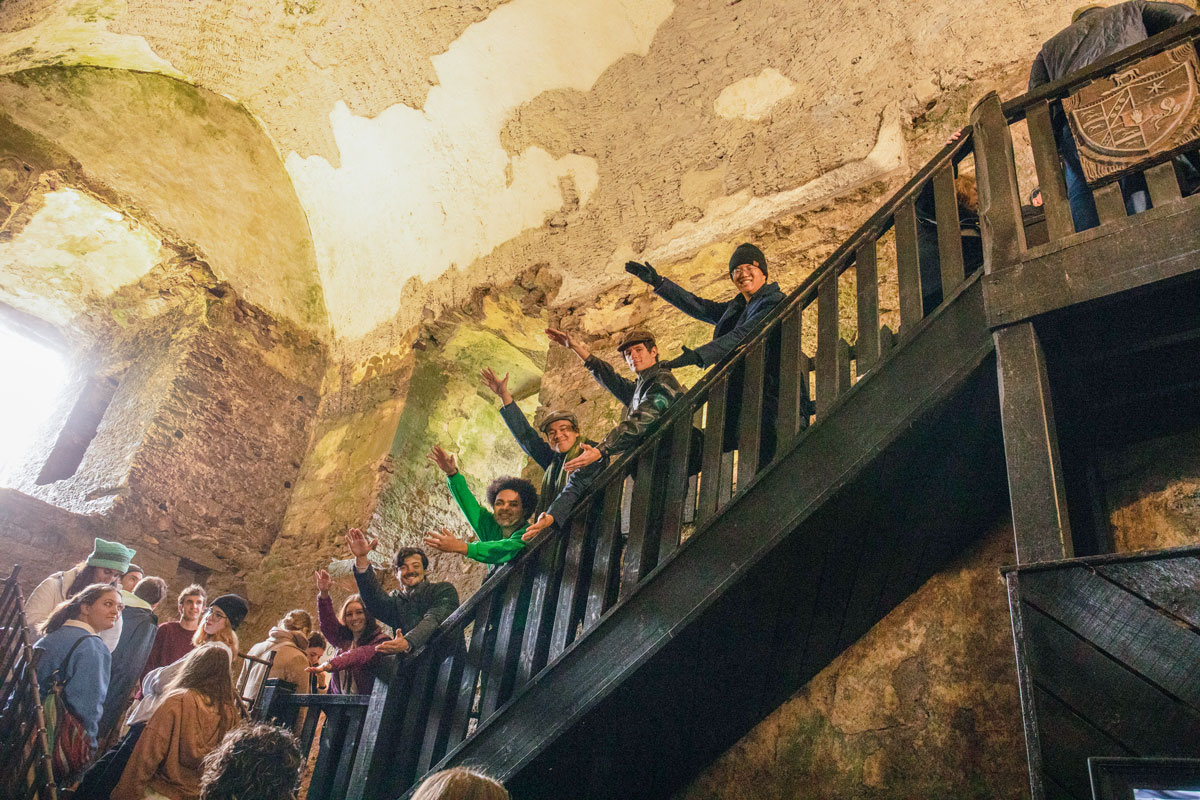
Blarney Castle is considered to be one of the most famous castles in Ireland. While the castle itself has a long history, the true tourist attraction is to kiss the Stone of Eloquence, better known as the Blarney Stone.
Kissing the Blarney Stone is not an easy feat. After climbing several stairways that could be better-called ladders, the students all leaned over backward off the side of the castle. Guards are in place to protect from the fall stories below.
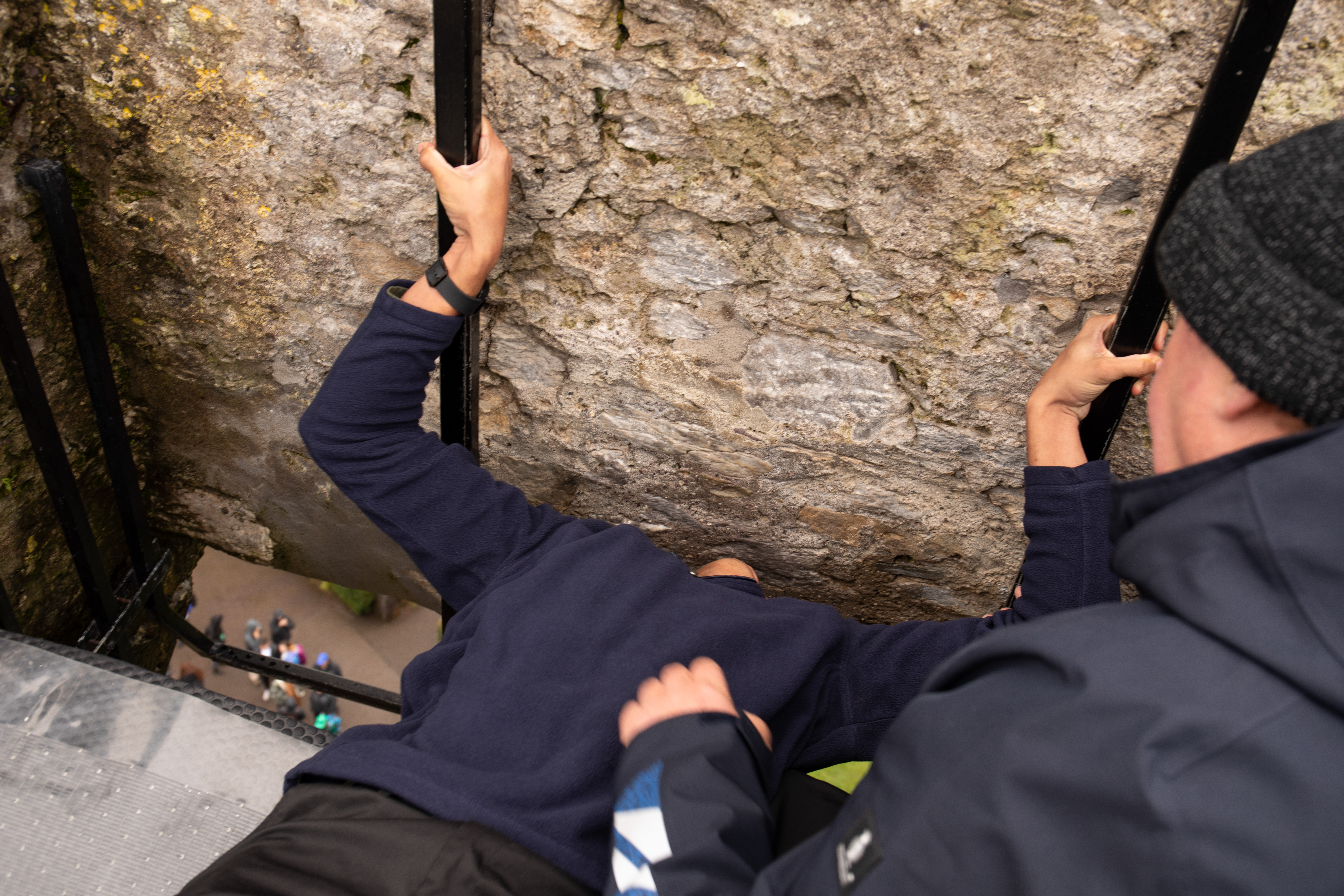
Queen Elizabeth I commanded an earl to take possession of the castle. Whenever the earl tried to negotiate with the castle’s inhabitants, there was always a banquet or some other delay, and the earl never took control of it. The queen, unhappy with the earl’s seeming incompetence, said the earl’s reports were all “blarney” or clever, flattering or coaxing talk.
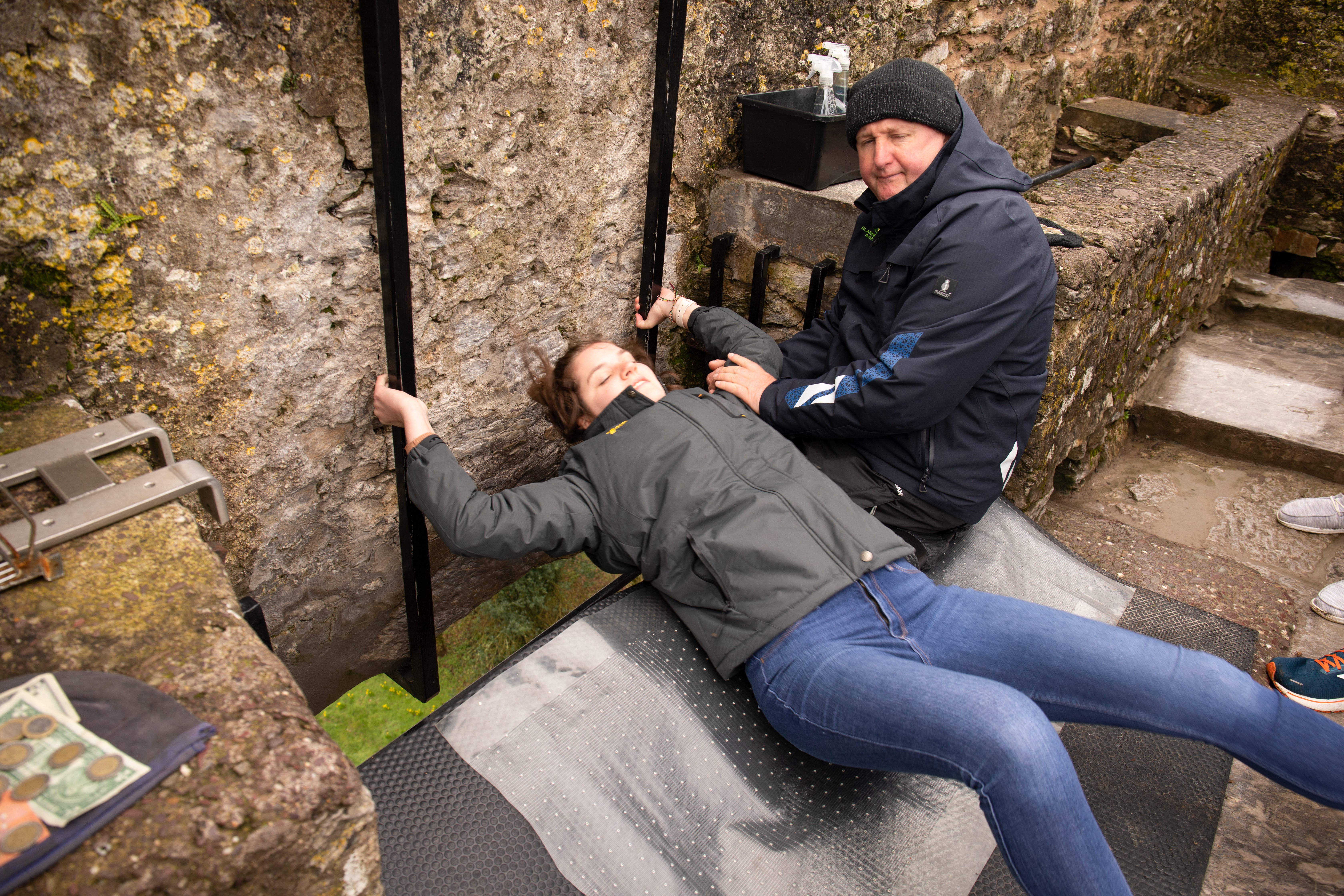
The kisser now has the “gift of gab” after completing the ritual.
Students had the opportunity to explore the grounds and gardens surrounding the tower house before the St. Patrick’s Day parade the next morning.
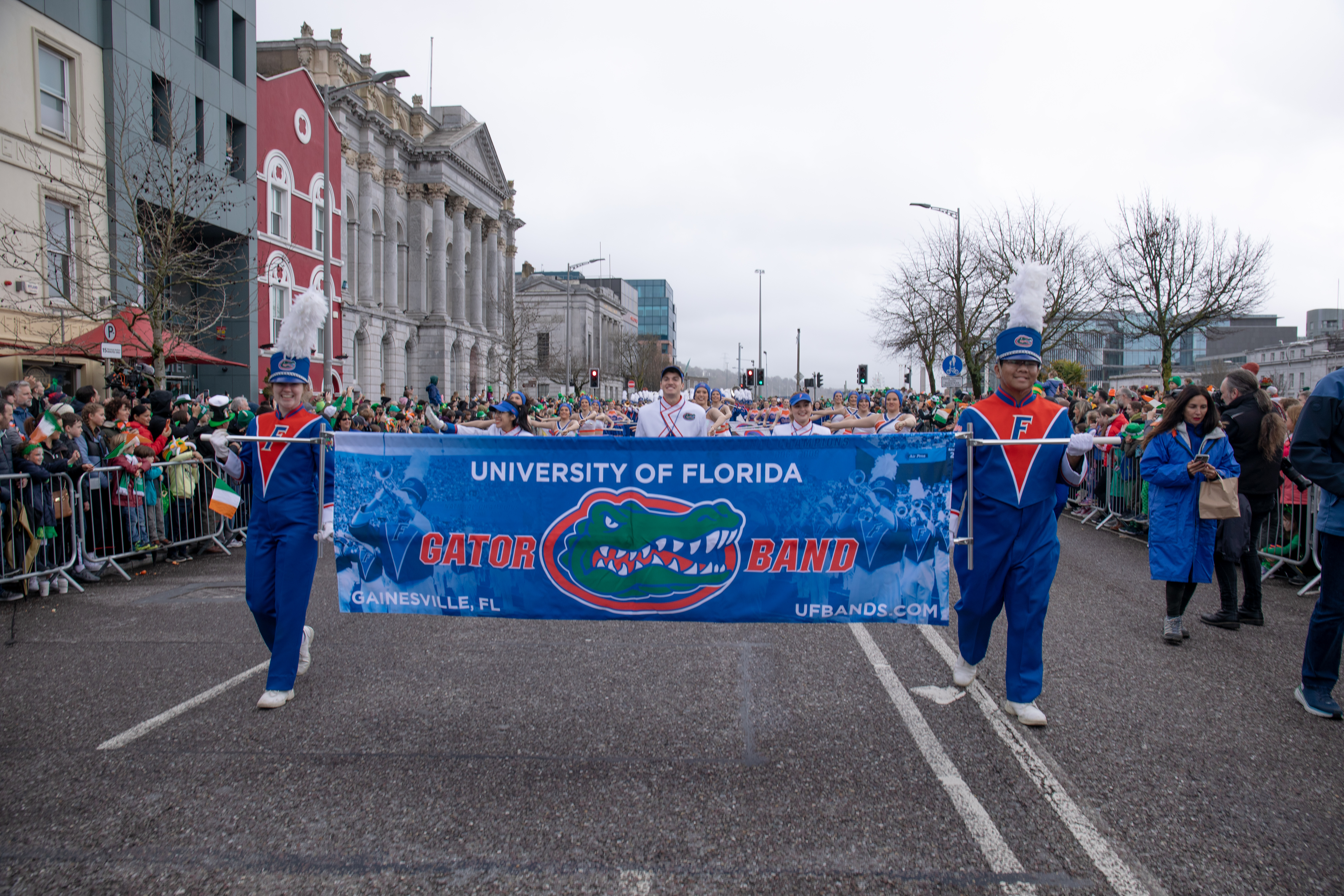
Gator Band’s first event was the annual St. Patrick’s Festival Parade in Cork. The parade is considered to be one of Cork’s most vibrant and colorful displays.
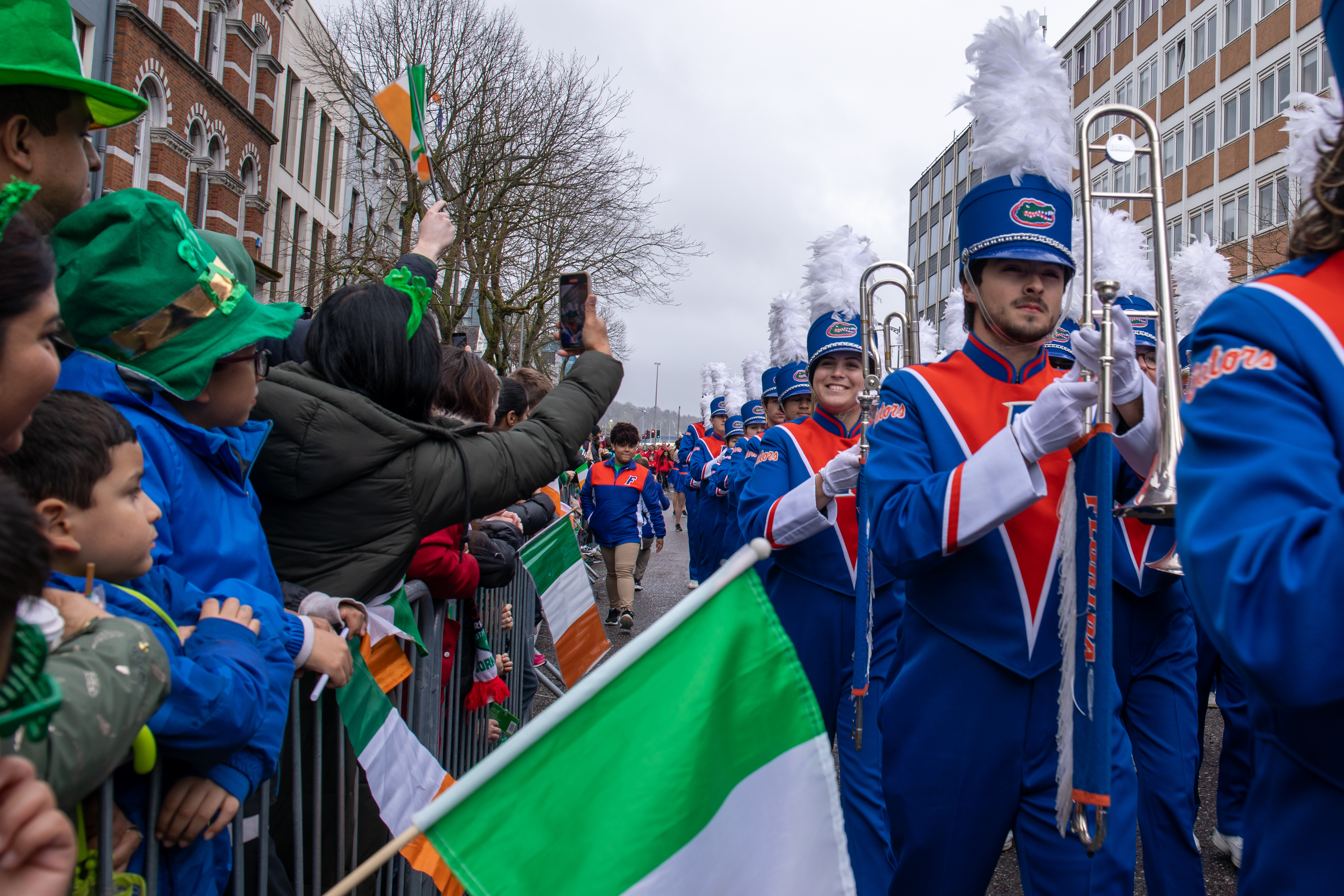
One of the international guests, the parade also features sporting groups, dance schools and brass bands.

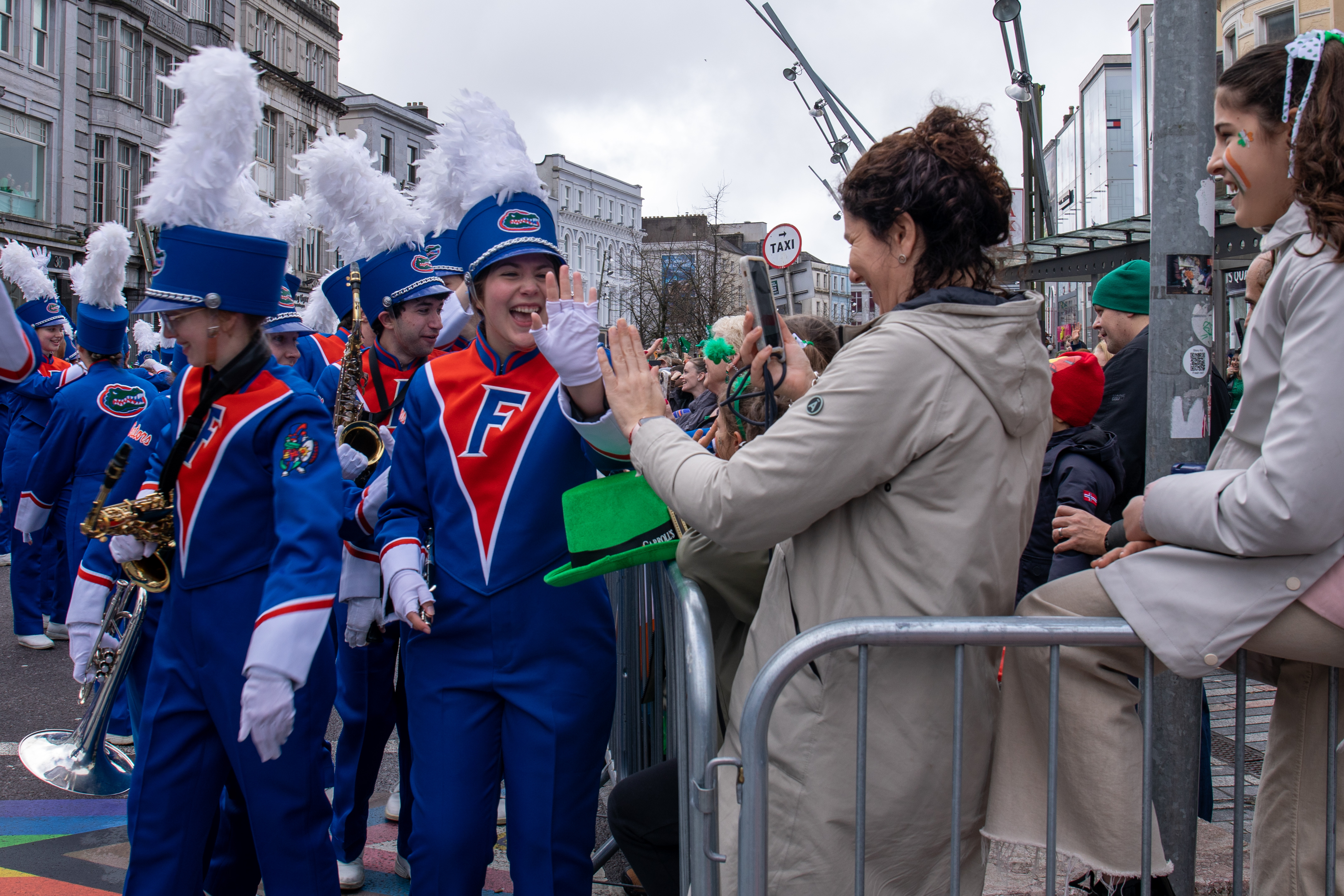
The students were excited to show off their talents to the people of Cork. The band stayed in Cork for two days interacting with locals. People on the street were shocked by the sheer size of the group. A Gator Band tradition is to interact with the crowd during parades.
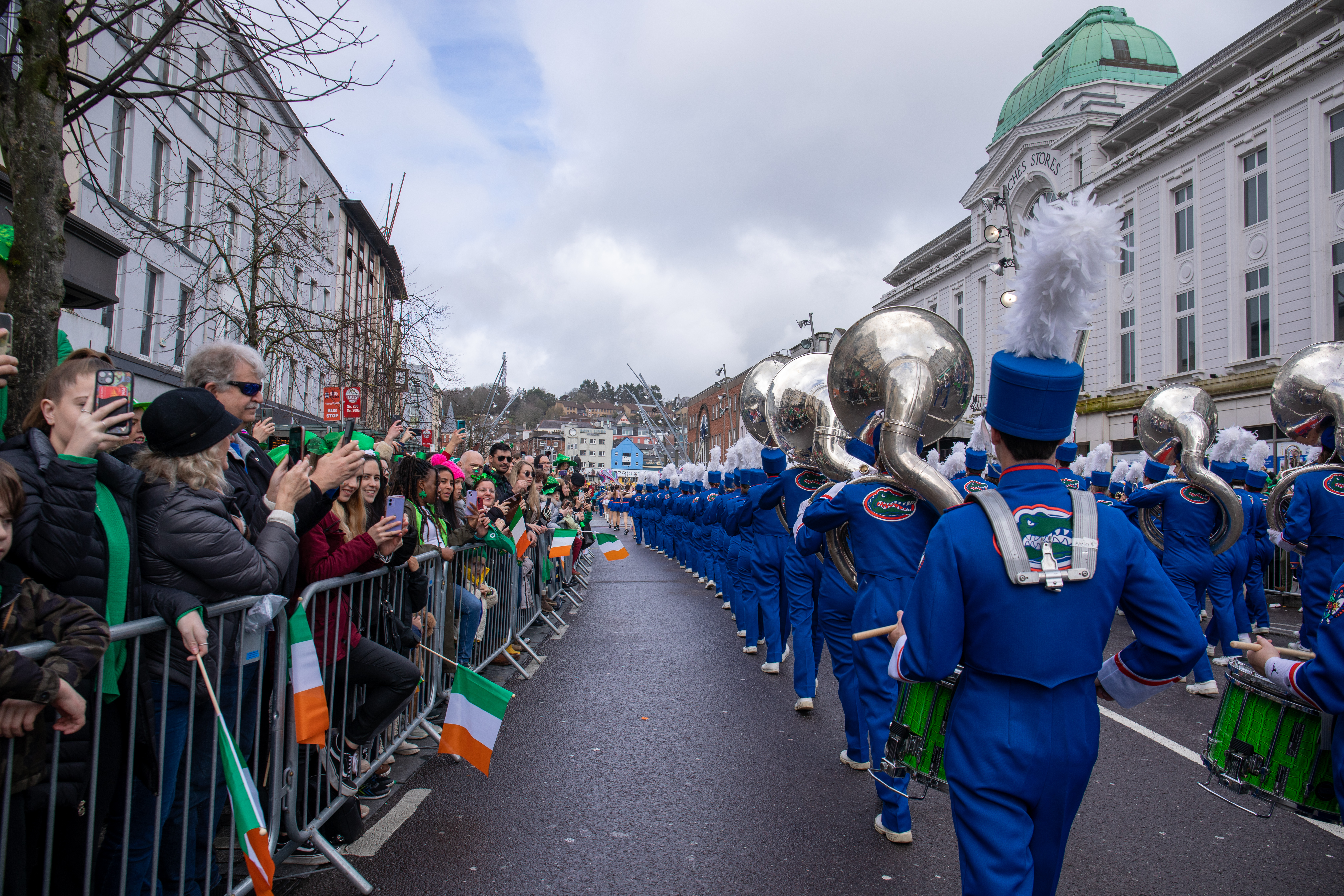
The band filled the streets with popular school songs like “The Orange and Blue” and “Boys’ March” as well as Irish tunes like “Danny Boy” and “Itzbin Reel.” The Cork parade, which was just over a kilometer, had a standstill performance toward the end where the Pride of the Sunshine played “You are my Sunshine.”

Staff members were just as excited, if not more, as the students to meet with the people of Ireland during the events and throughout Ireland to share The Sound of the Gator Nation.
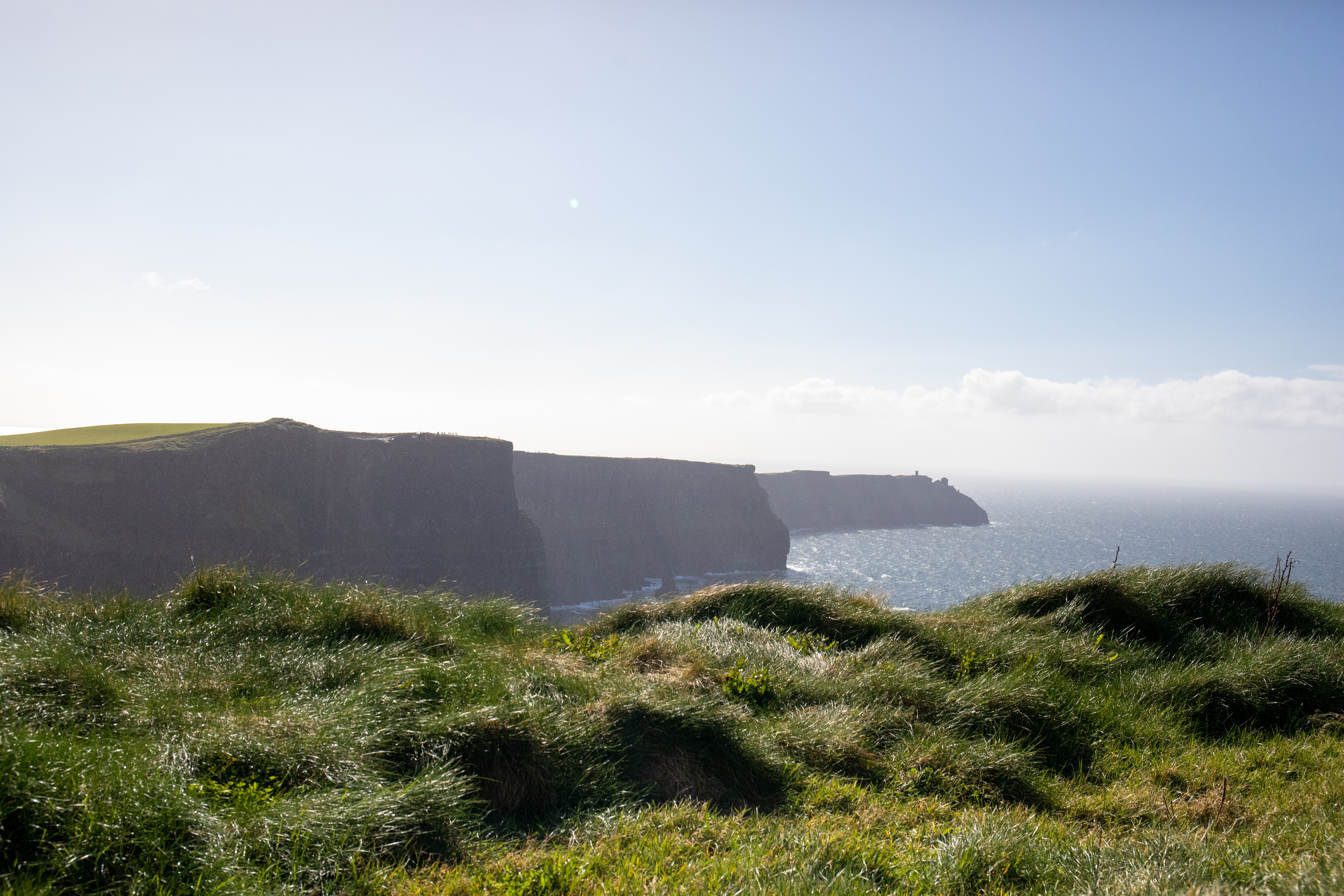
The next stop on the journey was Limerick. On the way there, the buses went to the Cliffs of Moher.
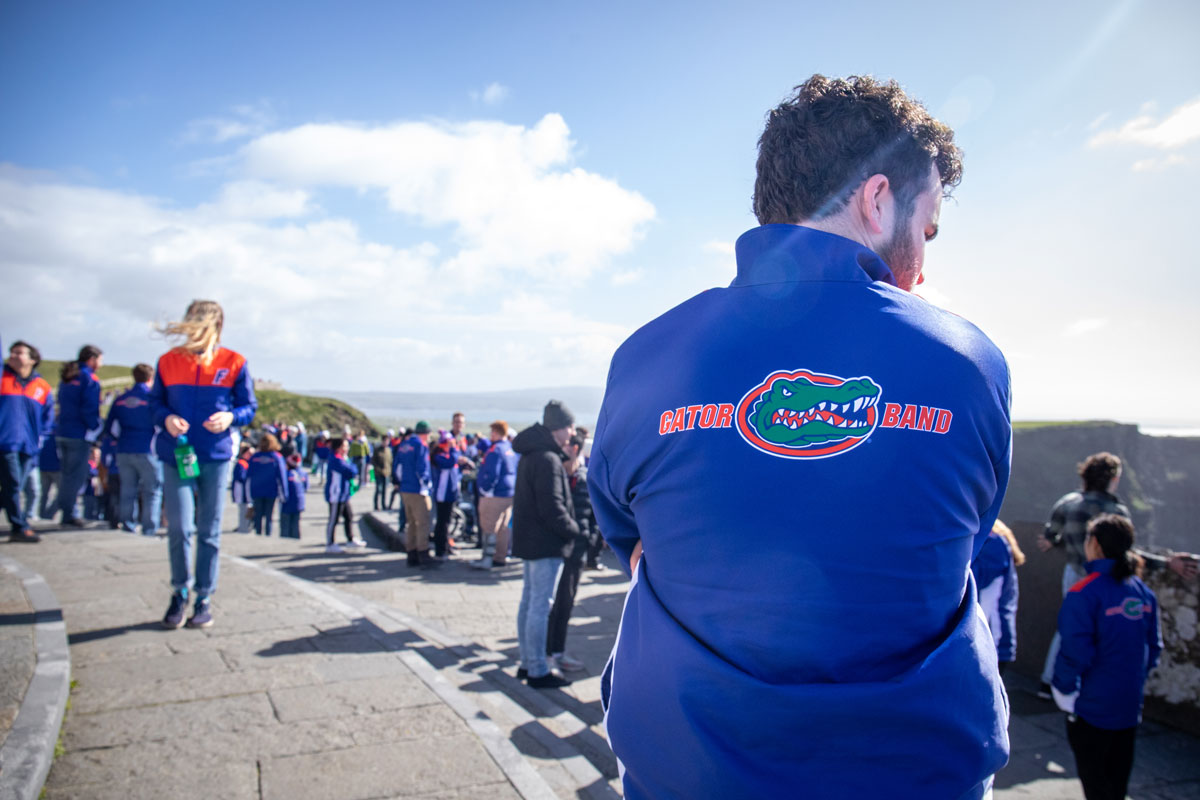
With wind gusts at 80 miles per hour, the sea cliffs are one of the most popular tourist destinations in Ireland because of their natural beauty.
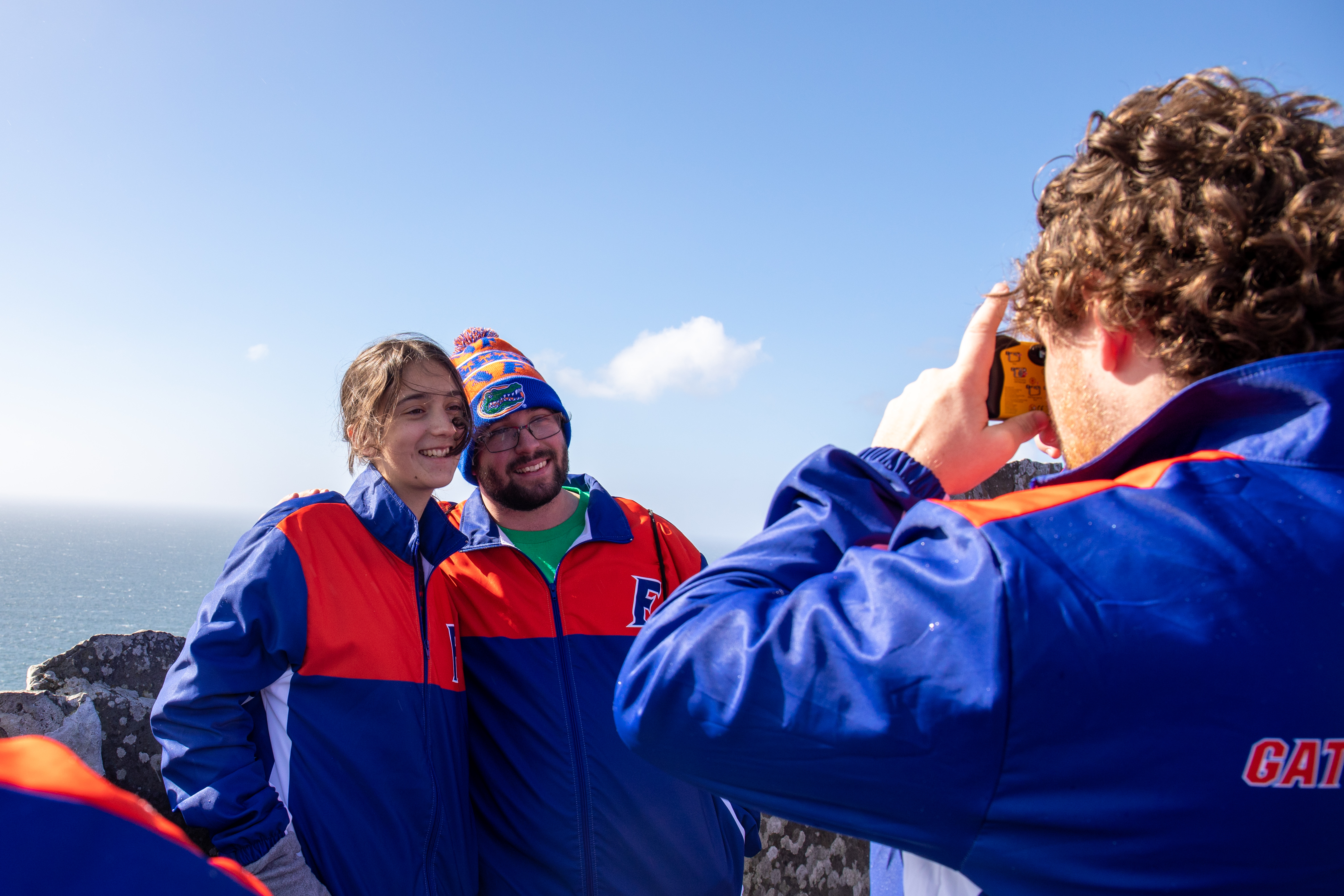
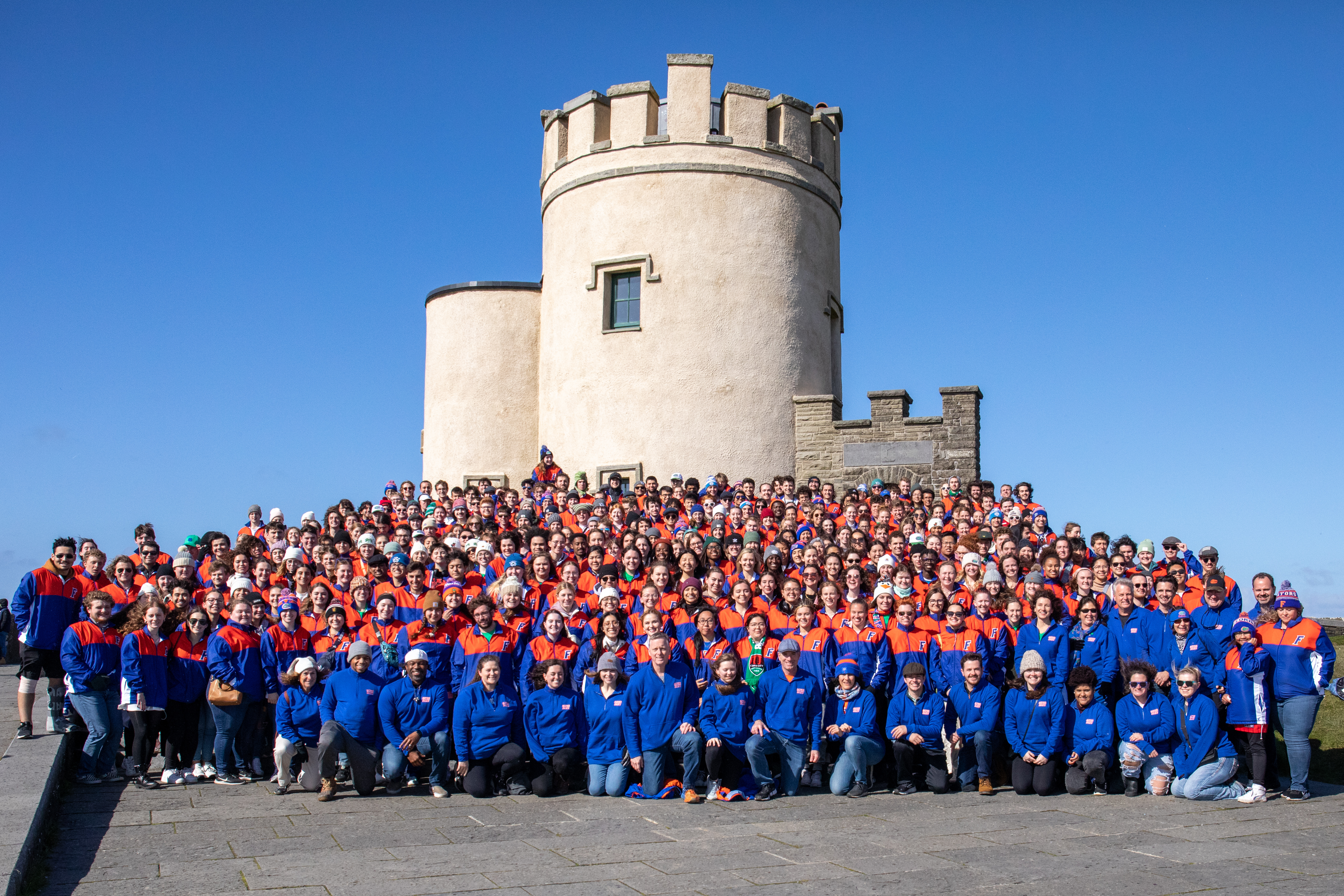
Students took the opportunity to take photos and a full group photo.
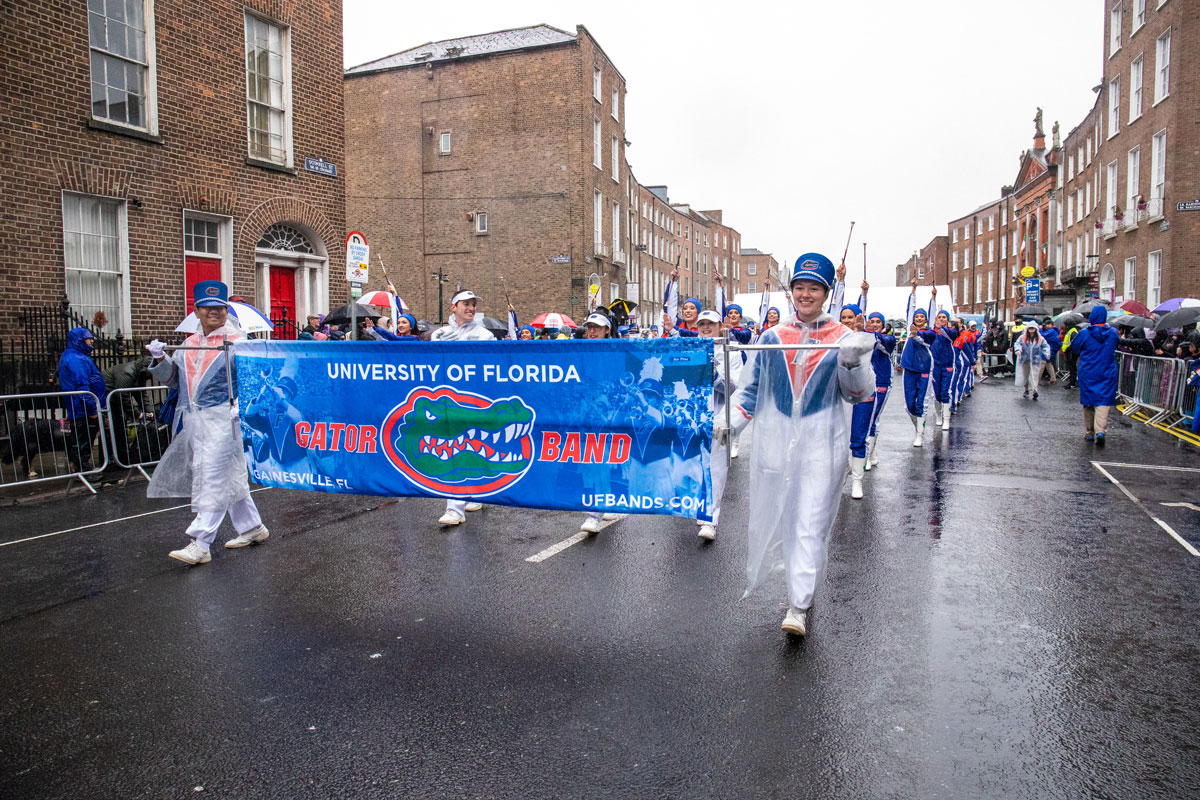
Gator Band participated in the 51st International Band Championship in Limerick. The bands competing were from across Europe and the United States as they marched through the city.
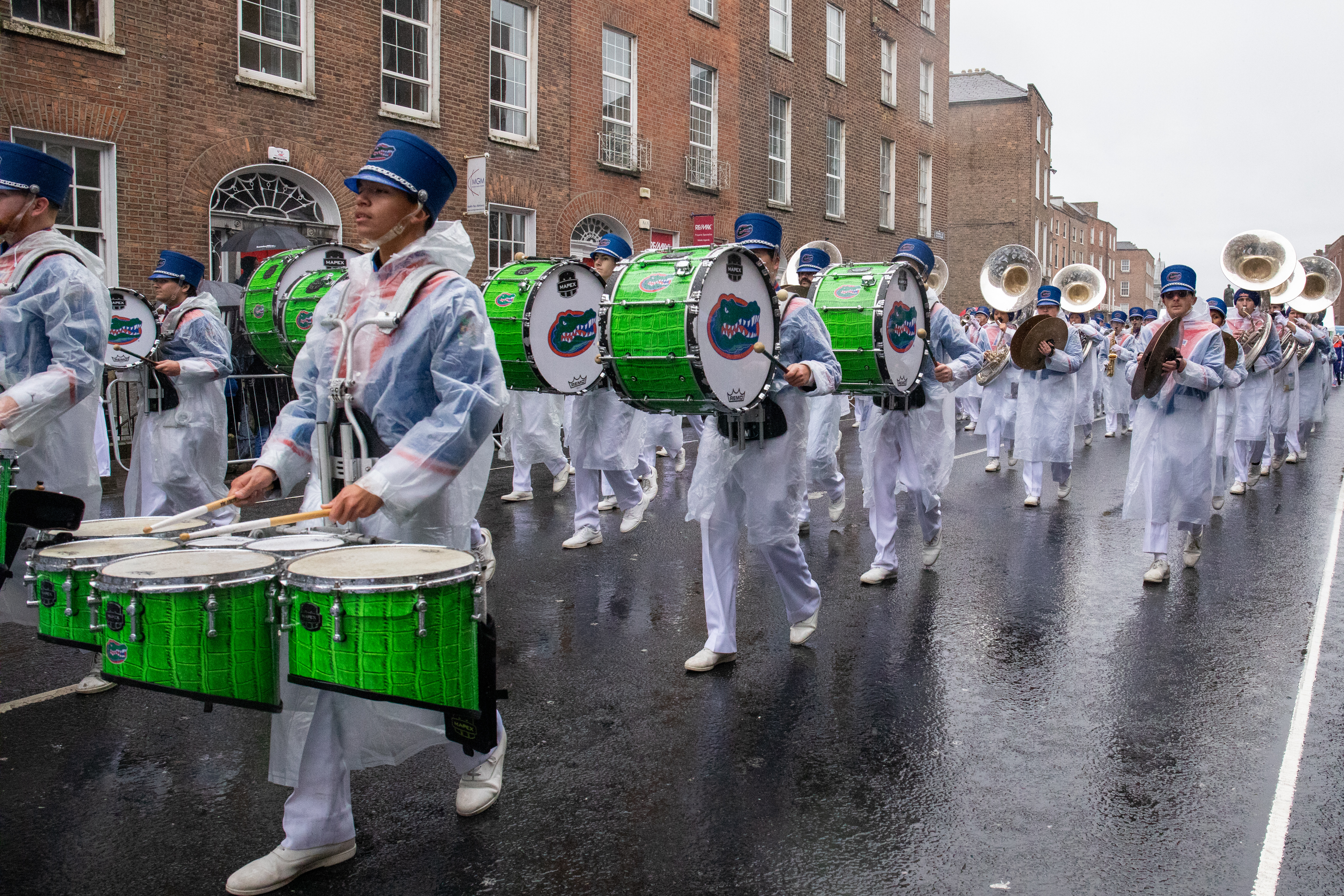
While the weather was mild for the majority of the week, Limerick brought out the worst in Irish springtime weather. With the temperature hovering in the high 40s, the wind and rain made Gator Band truly stick together in all kinds of weather.
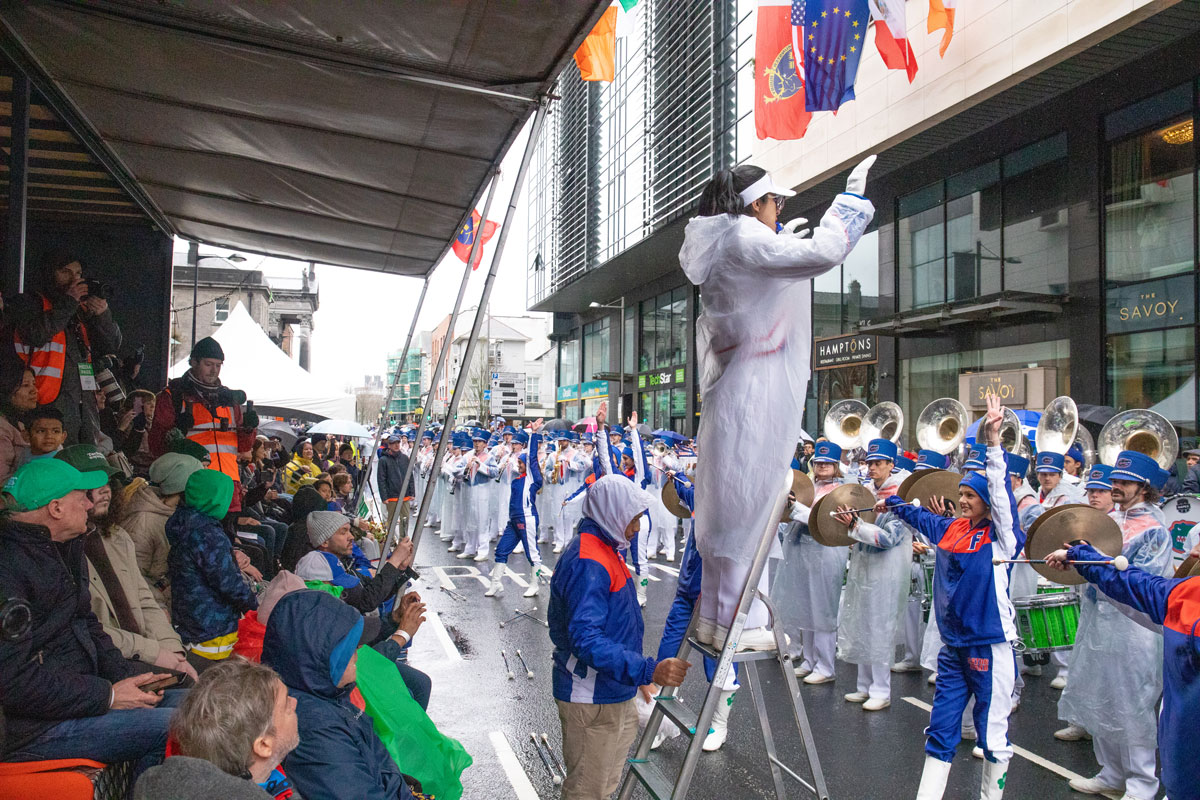
This performance consisted of a short parade with a longer standstill performance at the end. The crowd in the grandstands sang along to Tom Petty and Elvis while the Gatorettes and Florida Visual Ensemble performed their routines.
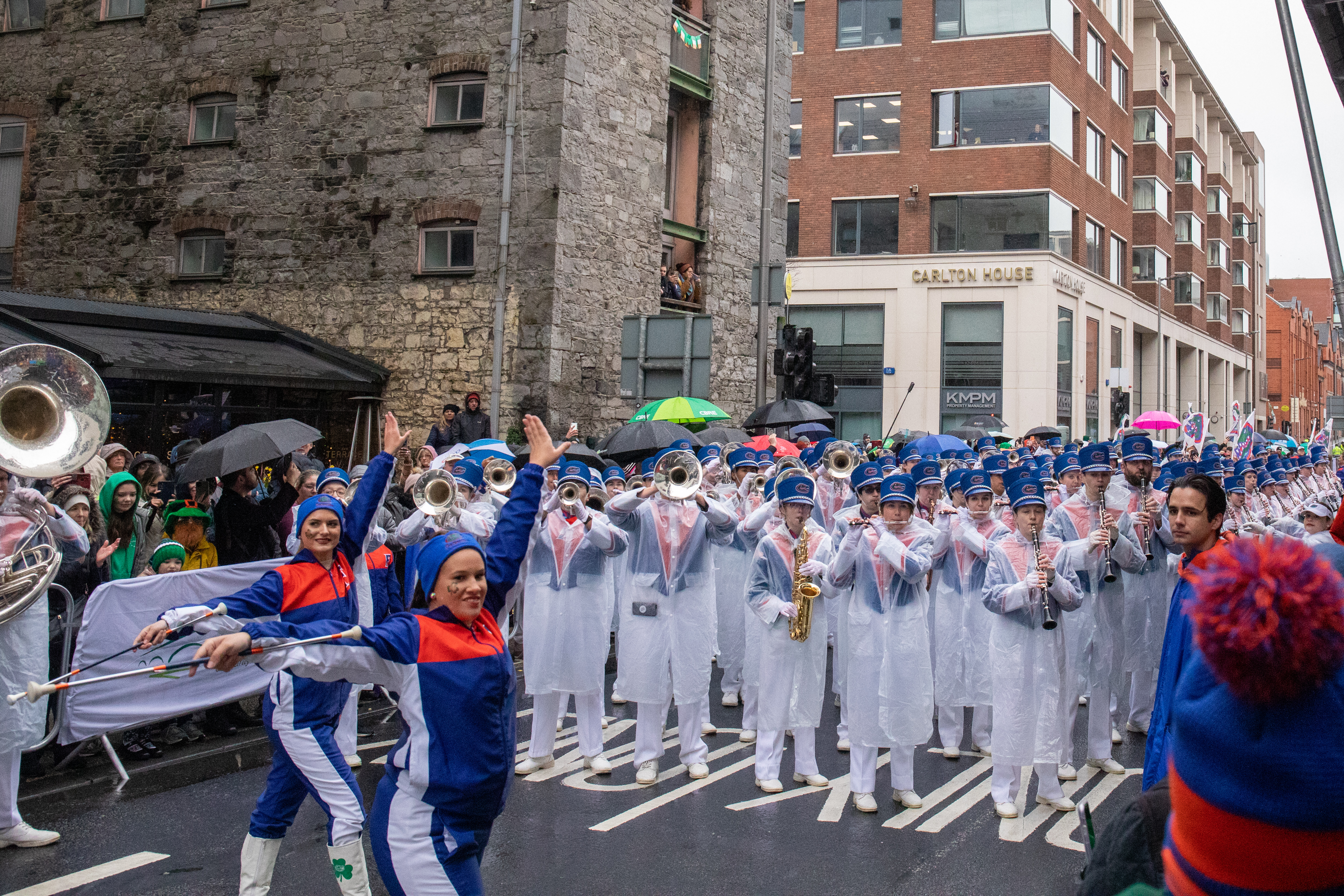
Gator Band performed last as an exhibition, meaning it did not compete. However, the Pride of Bixby from Bixby, Oklahoma, were the overall winners of the championship.
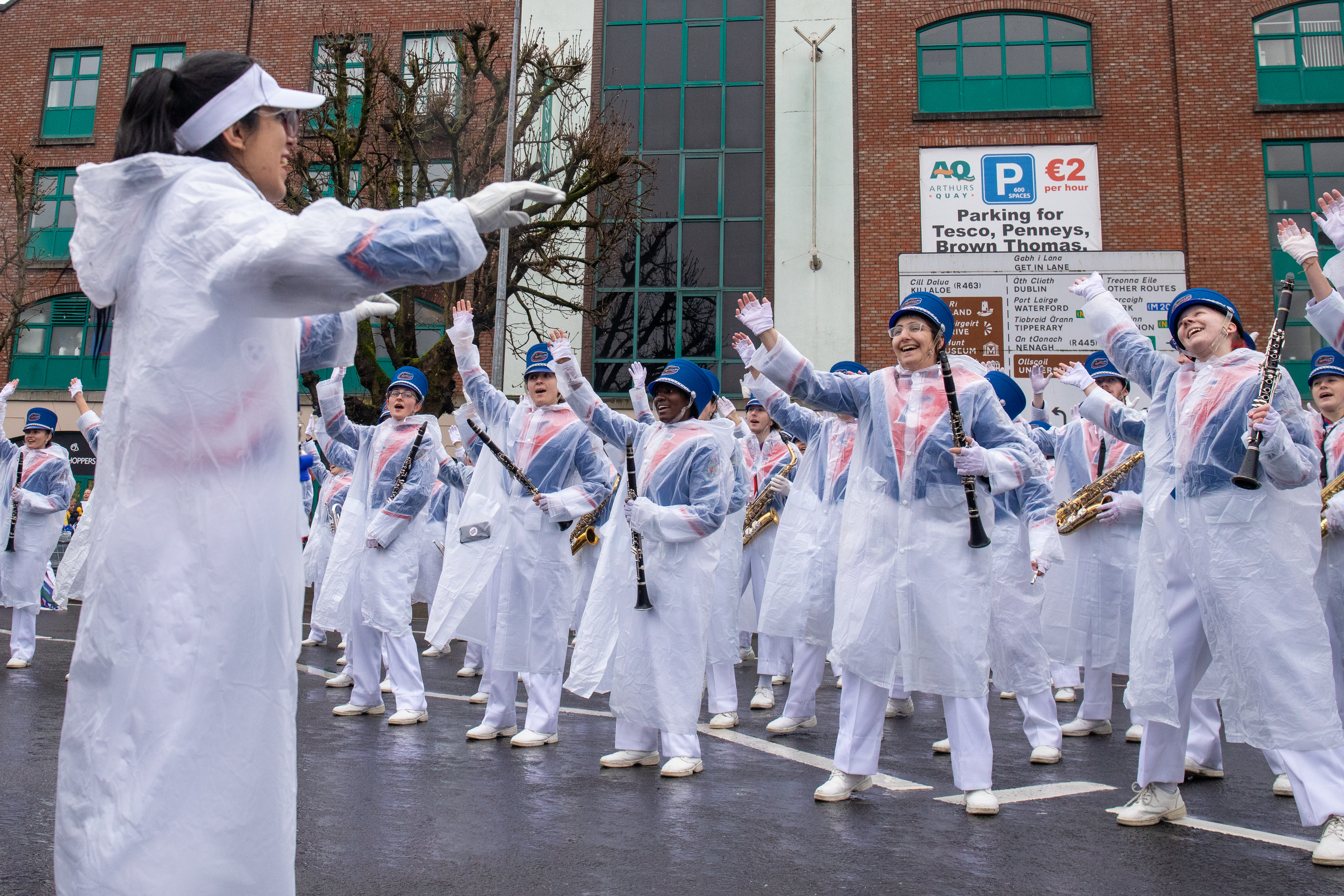
The International Band Championship ended with each group performing for each other some of their traditional songs. Onlookers sang along to “We are the Boys” and “Hey, Baby” during Gator Band’s turn.
Gator Band closed out the St. Patrick’s Festival in Dublin with a standstill concert.
The goal of the festival was to invite Ireland and the world to reconnect in Dublin in a global celebration of Irish arts, culture and heritage.

The concert was held in Merrion Square Park where spectators stopped to watch 342 members perform for the last time in Ireland.
As a final farewell to a country that had welcomed the band with open arms, students and staff finished the trip with a three-course traditional Irish meal and performance by Irish dancers. Gator Band finished out its time in Ireland the way it started, with music by singing along with the Irish songs at the dinner.